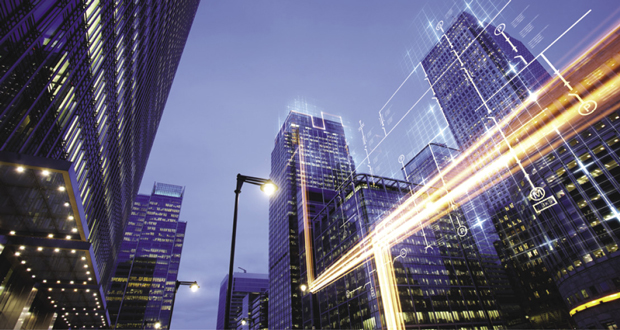Mark McLoughlin, Key Account Manager for Siemens Industries and Markets and Siemens Financial Services explains why it pays to invest in the latest smart building technology
There are a number of external factors that can impact the success and productivity of your business, and you might think many are outside of your control. But there is technology available to mitigate four key issues; rising energy costs, false alarm, staff absence and criminal activity.
RISING ENERGY COSTS
Research suggests that businesses may be paying 50 per cent more in 2020 for power than they were in 2016. Since energy is a necessary expense, businesses may find they are unable to invest in activities such as developing new product lines, employing new staff or acquiring new equipment, because funds are needed to meet rising energy costs.
The technology: Non-domestic buildings are responsible for between 10 per cent and 15 per cent of carbon emissions. Smart buildings have the potential to save approximately 15 per cent to 25 per cent on energy costs.
Smart controls give buildings a “central nervous system” that balance and reconcile competing interests such as energy minimisation, occupant comfort and grid stability. Today, fire protection, climate control, ventilation, lighting and video surveillance are often controlled separately. Modern, sophisticated management stations, on the other hand, allow all building systems to be integrated into a single platform. Return on investment (ROI) from smart building controls will vary, depending on external climate, cost of power, and other factors. For example, our research shows that in the manufacturing sector cost savings from energy optimisation programmes are in the region of at least 25 per cent, compared with just six per cent actually achieved from reduced energy usage in UK manufacturing in the last five years.
ILLNESS AND STAFF ABSENCE
Sick staff cost British firms £77 billion annually in lost productivity. Presenteeism – when employees feel obliged to remain at work while sick – leads to added pressure and anxiety for workers, and potentially increased sickness levels as germs spread around the workplace.
The technology: There are a number of building technologies designed to improve the mental and physical wellbeing of occupants. Produced by UK Green Building Council and issued by the World Green Building Council, a report entitled ‘Health, wellbeing and productivity in offices: the next chapter for green building’ highlights that good indoor air quality and lighting conditions, thermal comfort, and the minimisation of unwanted noise are among the key elements of healthy and productive workplaces.
Smart building management systems can help to meet these requirements, for example by controlling a building’s temperature, varying it across different rooms or areas, depending on its use and the desire of its occupants. This can automatically adjust as the temperature changes outside. Lighting levels can also be localised according to use of a particular space and the natural light it receives. LED technology not only saves on energy consumption, but it can also offer sophisticated colour and brightness combinations to manage occupant comfort, mood and improve staff concentration and productivity. Human-centric lighting seeks to optimise ideal circadian cycles by reproducing daylight as closely as possible, and adjusting automatically to maintain that resemblance through different parts of the day. It works by adjusting the light colour quality – comprising correlated colour temperature (CCT) and colour rendering – as well as its intensity.
FIRE AND FALSE FIRE ALARMS
It is estimated that by 2020 UK PLC could stand to lose as much as £10 billion to commercial and industrial fires. In addition, false fire alarms cost the UK economy £1 billion a year.
The technology: Intelligent solutions aim to determine the cause of the emission enabling the system and its operators to react accordingly. If the system detects fumes such as cigarette smoke, deodorant fumes, or burnt toast it can give the operator time to manage the situation before instigating a full alarm or building evacuation and alerting the fire brigade. This means that when the detector is activated, occupants know that it’s a real emergency.





